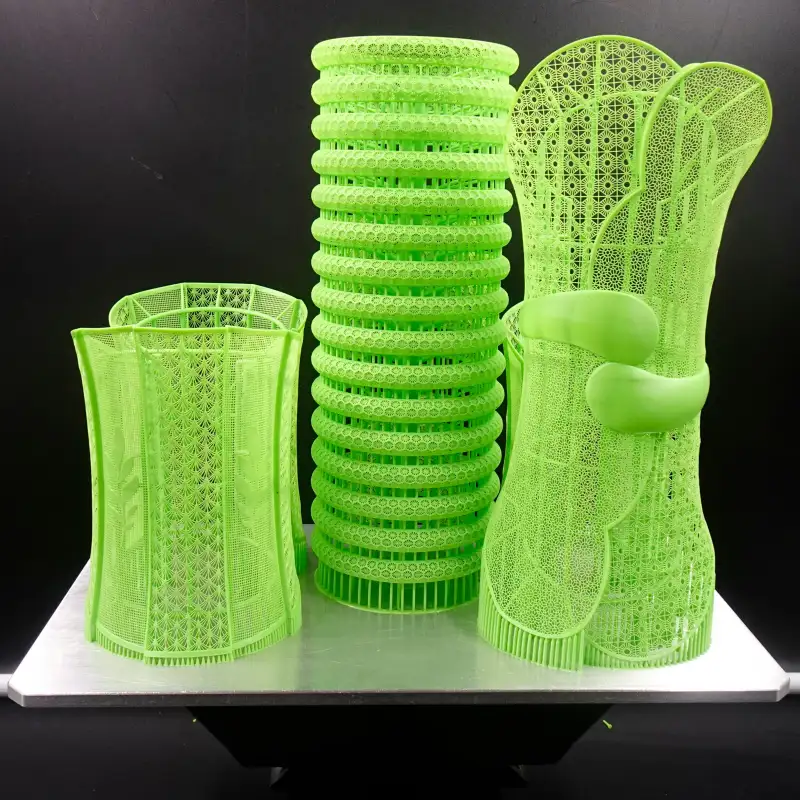LIGHTWEIGHT JEWELLERY AND 3D PRINTING: THE FUTURE OF JEWELRY DESIGN IN THE WAKE OF ROARING GOLD PRICES
RISING GOLD PRICES: IMPACT ON JEWELRY MANUFACTURERS
April 2025 saw gold prices soar to previously unheard-of levels, with spot gold reaching $3,373.70 an ounce. Geopolitical tensions and a declining dollar are the main causes of this spike, which forces jewelry makers to reconsider their designs. Lightweight jewelry designs are being used by manufacturers to cut down on gold usage without compromising quality.
Digital Light Processing (DLP) 3D printing is the perfect way to create complex designs while reducing waste, especially with Protospeed's cutting-edge Rapid, Magnus, and ProtoX printers. Jewelers may lower material costs, increase profitability, and maintain their competitive edge in the market by incorporating these technologies.
INTRODUCTION: GOLD PRICES REACH RECORD HIGHS – THE CONSEQUENCES FOR JEWELRY MAKERS
On April 21, 2025, spot gold reached an astonishing $3,373.70 per ounce, marking a historic gold price surge. This sudden increase is attributed to the deteriorating U.S. dollar and the rising conflicts between the United States and China, which have caused investors to seek refuge in gold. According to analysts, gold may attain even greater heights, with estimates of $3,650 to $3,950 per ounce.
For jewelry manufacturers, the basic material costs have skyrocketed as a result of the substantial increase in gold prices. Gold prices have increased by 24% year-to-date, according to the London Bullion Market Association. Manufacturers and designers are under increasing pressure to reduce gold usage as the cost of gold continues to rise. The trend toward lightweight jewelry is gaining momentum as a means of reducing material costs while preserving the luxury aesthetic.
STRATEGIES FOR CREATING STUNNING LIGHTWEIGHT JEWELRY: DESIGNING LIGHTER AND SMARTER
Innovative design techniques are necessary to produce lightweight jewelry that maintains the aesthetic appeal and durability of the piece while minimizing gold usage. Designers can reduce metal content without compromising strength or attractiveness by employing techniques such as hollow structures, fine filigree, micro-engraving, and openwork motifs. For instance, lattice and honeycomb infill patterns can reduce gold consumption by as much as 30%, resulting in substantial cost reductions.
- Better Wear-ability: Lightweight Jewelry is more pleasant, rendering it suitable for daily use.
- Wider Appeal: Slimmer and more ergonomic designs appeal to a larger audience for daily use than conventional hefty gold items that are usually worn on special occasions.
- Sustainability: Resource-efficient manufacturing is supported by lighter designs, which help to minimize the environmental impact and reduce gold consumption.
- Ecology-Conscious Alignment: The trend toward lightweight jewelry is consistent with the increasing demand for environmentally responsible and ethical products among consumers.
THE FUTURE OF JEWELRY MANUFACTURING: THE ROLE OF DLP 3D PRINTING
Modern 3D printing technologies like Digital Light Processing (DLP) are revolutionizing the jewelry industry as gold prices rise. DLP printing is particularly adept at producing complex, fine-featured designs requiring little material waste.
DLP guarantees high fidelity in reproductions, strong adhesion between layers, and smooth surfaces by simultaneously curing entire cross-sections of resin. Designers may now experiment with intricate geometries, such as microfiligree or thin-walled constructions, while maintaining workmanship and precision by using this technology.
Rapid, Magnus, and ProtoX—Protospeed's three high-performance 3D printers—are intended to simplify the process of producing lightweight jewelry. Minimizing waste and optimizing efficiency, these printers allow jewelers to generate intricate, ultra-fine designs on a large scale.
PROTOSPEED 3D PRINTERS: RAPID ACCESS TO SPEED, ACCURACY, AND ADAPTABILITY
Protospeed's modern 3D printers are revolutionizing jewelry manufacture by offering unrivaled precision, speed, and diversity. These advanced printers can assist jewelers in producing lightweight, superior products in the following ways:
Increasing Production Rates Without Compromise on Quality
With a layer thickness of 50µm, 30µm, 42µm & 24µm, all Protospeed models—Rapid, Magnus, and ProtoX—can print from 50mm/Hour up to 65 mm/hour. This speed cuts prototype and production time, enabling jewelers to produce designs rapidly with great detail.
Multi-Mode Printing & Casting Trees Enable Versatility
Jewelers may maximize their production runs and reduce labor expenses by using Protospeed printers, which handle both single-piece printing and full-length casting tree printing. This adaptability is essential for handling the demands of both large-scale and small-batch manufacturing.
• Rapid Printer: The Ideal Mix of Resolution and Speed
High-speed printing, a huge platform size, and outstanding XY resolution are all well balanced in the Rapid model. This streamlines manufacturing procedures and makes it ideal for direct tree printing and complex, lightweight components.
• Magnus Printer: Compact, Inexpensive, and Ideal for Exquisite Designs
There are two build volume options for the Magnus (134 × 75 × 112 mm and 105 × 59 × 112 mm). It is a quick, reasonably priced and entry-level DLP printer. It offers jewelers an affordable choice for batch manufacturing and is perfect for creating delicate designs in large quantities.
• ProtoX Printer: Driving Jewelry Production at High Volumes
With a build area of 230 × 129 × 200 mm and a sturdy projector that can handle massive volumes of fine details, the ProtoX is made for large-scale production. This makes it ideal for jewelry producers that want to grow their business without sacrificing quality.
CONCLUSION-FUTURE OF JEWELRY MANUFACTURING: DEVELOPING LIGHTWEIGHT DESIGNS AND INNOVATIVE 3D PRINTING
The jewelry industry is moving toward lighter designs as a result of the rising price of gold. This shift represents a chance to innovate and improve sustainability, not merely a reaction to financial constraints. Jewelers can produce stunning, detailed, and structurally sound items with Protospeed's high-speed DLP 3D printers while using less gold, producing less waste, and increasing profits.
Incorporating cutting-edge 3D printing technology not only solves the pressing issue of growing material costs, but it also puts jewelry manufacturers in a position to lead in innovative and sustainable design. Lightweight jewelry and cutting-edge 3D printing will continue to be vital in determining the direction of jewelry production in a sector that is becoming more and more concerned with sustainability and expertise.

